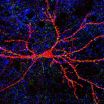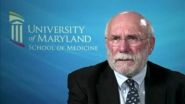An enzyme and synaptic plasticity
Study reveals novel role for the Pin1 molecule
2014-10-10
(Press-News.org) A small, "empty" space teeming with activity: a synapse is a complex structure where the neural (electrical) signal from the presynaptic neuron, as it travels towards its target –a muscle, a gland or another neuron – turns into a chemical signal capable of crossing the synaptic space before becoming electrical again once on the other side. A synapse is a "dynamic" space not only because of the endless work that goes on there, but also for its ability to change its action over time (synaptic plasticity) as a result of either normal physiological processes (e.g., during learning) or because of disorders due to pathological conditions. A study, mainly carried out by SISSA researchers (which also involved the University of Zurich, LNCIB in Trieste, and EBRI in Rome), showed that a small enzyme (Pin1, peptidyl prolyl isomerase) that plays a mediating role in signal transmission has an effect on synaptic plasticity.
"The synapse we studied is of the inhibitory kind. The signal it transmits hinders activation of the postsynaptic neuron, making it less likely for it to become activated and emit its action potential", explains Paola Zacchi, a SISSA researcher who coordinated the study. "When Pin1 is absent from the synapse, signal transmission occurs "at full strength", but also without control. Instead, when it is present, it regulates signal strength, making it weaker. We observed that Pin1 is able to modify the number of postsynaptic receptors". The larger the number of receptors capable of binding to the neurotransmitter, the stronger the signal that reaches the postsynaptic membrane. "This also means that Pin1 plays a role in plasticity" explains Zacchi.
More in detail...
How does a synapse work? "A chemical synapse, the most common in vertebrates, is a small gap between nerve cells where the passage of a neural signal occurs", explains Zacchi. In chemical synapses the two neurons are not in contact but they are separated by a distance of about 20 nanometres. For this reason, the electrical signal travelling along the presynaptic nerve ending is interrupted before resuming on the neuron on the other side of the gap. In between the two nerve cells the electrical signal is translated into a chemical signal (which then becomes electrical again).
"Arrival of the action potential on the presynaptic button causes release, into the interneural space, of molecules of neurotransmitter, which are picked up by receptors on the postsynaptic membrane", says Zacchi. "If the synapse is excitatory, this leads to postsynaptic activation which, if sufficiently intense, triggers another action potential. If the synapse is inhibitory, as in our studies, the signal suppresses postsynaptic activation and inhibits firing of the electrical potential. In the process of neurotransmitter release and binding, other molecules come into play, such as scaffold proteins, which assemble receptors at the right place on the membrane in front of the neurotransmitter release sites, and neuroligins which act as bridges between the two ends of the synapse as well as interacting with the scaffold proteins. Pin1, the enzyme in the study, interacts with both neuroligins and scaffold proteins.
The Pin1 enzyme has long been known for its role in cancer and the development of neurodegenerative diseases such as Alzheimer's and Parkinson's (whereas neuroligins seem to be involved in autism). "Studies like this enhance our understanding of the biochemical mechanisms of synaptic plasticity, extending our knowledge of healthy mechanisms, but also helping those who are trying to understand what can be done in a wide range of pathological conditions".
INFORMATION:
Useful links:
Original paper on Nature Communications: http://goo.gl/ch2X3d
[Attachments] See images for this press release:

ELSE PRESS RELEASES FROM THIS DATE:
2014-10-10
The sanitation intervention delivered under the terms of the Government of India's Total Sanitation Campaign—the world's largest sanitation initiative—provided almost 25 000 individuals in rural India with access to a latrine. However, it did not reduce exposure to faecal pathogens or decrease the occurrence of diarrhoea, parasitic worm infections, or child malnutrition.
"The programme is effective in building latrines, but not all households participate"*, explains lead author Professor Thomas Clasen from Emory University, Atlanta, USA and the London School ...
2014-10-10
VIDEO:
Dr. Myron M. Levine, Director of the Center for Vaccine Development at the University of Maryland School of Medicine describes the Ebola vaccine testing taking place in Mali, West Africa.
Click here for more information.
Professor Myron M. Levine, MD, Director of the Center for Vaccine Development (CVD) at the University of Maryland School of Medicine (UM SOM), and UM SOM Dean E. Albert Reece MD, PhD, MBA, announced today that the CVD, in conjunction with its sister institution, ...
2014-10-10
LA JOLLA, CA – October 9, 2013 - Scientists at The Scripps Research Institute (TSRI) have created a synthetic molecule that mimics "good" cholesterol and have shown it can reduce plaque buildup in the arteries of animal models. The molecule, taken orally, improved cholesterol in just two weeks.
This research, published in the October issue of Journal of Lipid Research, points scientists toward a new method for treating atherosclerosis, a condition where plaque buildup in the arteries can cause heart attacks and strokes.
"Atherosclerosis is the number one killer ...
2014-10-10
Large numbers of fish will disappear from the tropics by 2050, finds a new University of Britsh Columbia study that examined the impact of climate change on fish stocks. The study identified ocean hotspots for local fish extinction but also found that changing temperatures will drive more fish into the Arctic and Antarctic waters.
Using the same climate change scenarios as the Intergovernmental Panel on Climate Change, researchers projected a large-scale shift of marine fish and invertebrates. In the worst-case scenario, where the Earth's oceans warm by three degrees ...
2014-10-10
Using a recently developed biomarker of aging known as an epigenetic clock, UCLA researchers working closely with a German team of investigators have found for the first time that obesity greatly accelerates aging of the liver. This finding could explain the early onset of many age-related diseases, including liver cancer, in obese subjects
Although it had long been suspected that obesity ages a person faster, it hadn't been possible to prove the theory, said study first author Steve Horvath, a professor of human genetics at the David Geffen School of Medicine at UCLA ...
2014-10-10
The ideal cost per dose for a new meningitis vaccine ranges from £3 up to a possible £22 only if several vaccine favourable factors all coincide, according to research which has analysed how to maximise the reduction in cases while making a new vaccination programme cost-effective.
Bexsero is the first vaccine to broadly protect against meningitis B disease, but research now suggests the Government would need to negotiate a considerable reduction in the £75 list price in order to provide the same value for money as other programmes in the NHS.
In March ...
2014-10-10
Proteins regulating cell division determine tumour growth. Ongoing clinical trials are currently studying inhibitors for two of these proteins, Cdk4 and Cdk6, targeting several types of cancer, such as breast cancer, lung cancer and leukaemia. The Cell Division and Cancer Group at the Spanish National Cancer Research Centre (CNIO), led by Marcos Malumbres, has discovered the molecular mechanism behind the interaction of these proteins. Researchers also demonstrated in mice that the simultaneous inhibition of both molecules is more effective than the individual inhibition. ...
2014-10-10
Focusing on large, star-forming galaxies, researchers at the Johns Hopkins University were able to measure radiation leaks in an effort to better understand how the universe evolved as the first stars were formed.
Sanchayeeta Borthakur, an assistant research scientist in the Department of Physics and Astronomy in the university's Krieger School of Arts and Sciences, reports in a paper published online Oct. 9 in the journal Science that an indicator used for studying star-forming galaxies that leak radiation is an effective measurement tool for other scientists to use. ...
2014-10-10
(PHILADELPHIA) – Some cancers, like breast and prostate cancer, are driven by hormones such as estrogen and testosterone, but to date, there are none that are driven by the lack of a hormone. New evidence suggests that human colon cells may become cancerous when they lose the ability to produce a hormone that helps the cells maintain normal biology. If verified by further studies, it suggests that treating patients at high risk for colon cancer by replacing the hormone guanylin could prevent the development of cancer.
The researchers at Thomas Jefferson University ...
2014-10-10
PHILADELPHIA — Higher levels of total cholesterol and triglycerides, two types of fat, in the blood of men who underwent surgery for prostate cancer, were associated with increased risk for disease recurrence, according to a study published in Cancer Epidemiology, Biomarkers & Prevention, a journal of the American Association for Cancer Research.
"While laboratory studies support an important role for cholesterol in prostate cancer, population-based evidence linking cholesterol and prostate cancer is mixed," said Emma Allott, PhD, postdoctoral associate at Duke ...
LAST 30 PRESS RELEASES:
[Press-News.org] An enzyme and synaptic plasticity
Study reveals novel role for the Pin1 molecule




